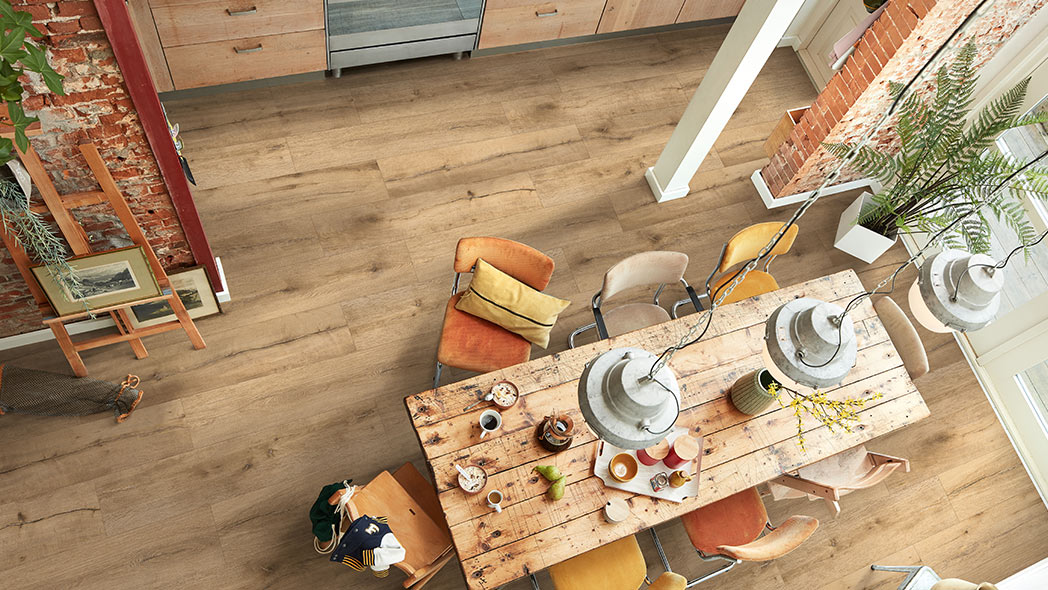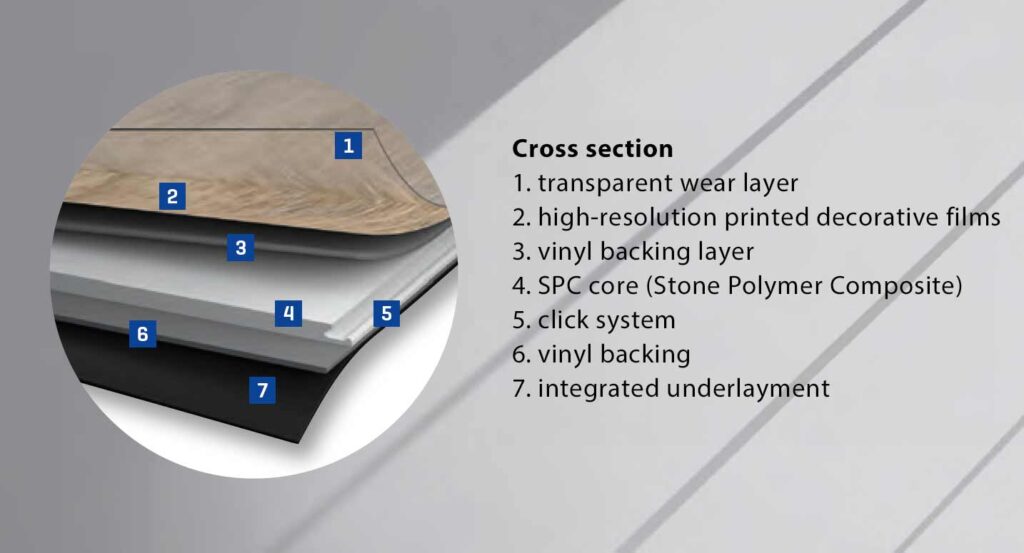
Vinyl flooring is increasingly popular due to its versatility and durability. A key factor in selecting the right vinyl floor is its usage class. This indicates how well the flooring meets the requirements of various areas of use – from living rooms to industrial halls. In this guide, we illuminate the concept of usage classes, their significance in selection, and the differences between the classes to ease your decision-making process.
Content
Definition of Usage Classes
Vinyl flooring usage classes are a standardized system designed to classify the suitability of different floor coverings for various areas of application. They define a floor's resistance and durability against wear, traffic, and mechanical stress. These classes assist both consumers and professionals in finding the ideal flooring for their specific needs.

Overview of the European Classification System (e.g., EN 685)
The European classification system, known under the standard EN 685, provides a detailed overview of vinyl usage classes for flooring, including vinyl. It categorizes floors based on their area of use – from light to intensive usage conditions. This standard facilitates the selection process by offering clear guidelines regarding suitability for residential, commercial, and industrial areas.
The Importance of Usage Classes for Selecting Vinyl Flooring
The usage classes of vinyl flooring are crucial for selecting the appropriate flooring, as they directly influence the durability and lifespan of the product. A floor with a higher usage class is designed for areas with heavy traffic and promises a longer lifespan. Choosing the correct class ensures that the flooring can withstand daily wear and tear and gives you precise information about which rooms it can be used for. This makes knowledge of the vinyl usage classes an indispensable tool in the planning of renovation and construction projects.
Wear Class? Not for Vinyl!
Unlike other types of flooring, vinyl floors do not have a specific wear class. Instead, the evaluation focuses on the usage class, which provides insights into the resilience and longevity of the flooring. Therefore, when purchasing vinyl, special attention should be paid to the usage class, which defines the suitability for various areas of application.
Residential Area (Usage Classes 21-23)
Usage classes 21 to 23 are specifically designed for vinyl floors in residential areas, where the strain from daily use is moderate. These classes are suited for private households, where rooms like bedrooms, living rooms, and children's rooms experience moderate wear. Choosing a vinyl floor within these usage classes guarantees an optimal balance between comfort, aesthetics, and durability. They offer good resistance to everyday stresses such as foot traffic and chair movements, without compromising on the variety of designs. Vinyl floors of classes 21 to 23 thus meet the requirements of domestic life very well.
| Usage Class | Area of Application | Level of Wear | Ideal for Rooms Like | Features |
|---|---|---|---|---|
| 21 | Residential | Low | Bedroom | - Good resistance to daily foot traffic - Aesthetics and comfort |
| 22 | Residential | Moderate | Living room, Children's room | - Balanced durability and design - Suitable for moderate wear |
| 23 | Residential | Moderate to high | Dining room, Hallways | - Increased durability for areas of intensive use - Long-term beauty and utility |
Commercial Area (Usage Classes 31-33)
Usage classes 31 to 33 for vinyl floors specifically address the needs of the commercial sector. They are designed for areas where a higher level of wear is prevalent, such as in offices, retail stores, or restaurants. These classes represent an above-average resilience and are thus capable of withstanding the intense daily foot traffic and associated signs of wear. A vinyl floor from these classes not only provides a robust and durable surface but also an appealing look that contributes to the professional atmosphere of a business. Investments in vinyl floors of classes 31 to 33 thus ensure a sustainable flooring solution that meets both the aesthetic and functional requirements of commercial spaces.
| Usage Class | Area of Application | Level of Wear | Ideal for Rooms Like | Features |
|---|---|---|---|---|
| 31 | Commercial | Medium | Small offices, Boutiques | - Robust surface for daily foot traffic - Appealing look for professional settings |
| 32 | Commercial | High | Retail stores, Cafés | - Above-average durability - Combines longevity with aesthetic appeal |
| 33 | Commercial | Very high | Restaurants, Open-plan offices | - Maximum resilience for intensely used areas - Sustainable solution for high wear |
Industrial Area (Usage Classes 41-43)
Usage classes 41 to 43 are intended for vinyl floors in industrial areas, where they must meet extreme requirements. These classes are the most robust in the spectrum and are ideal for locations where heavy machinery, strong mechanical stresses, and very high foot traffic are common. A vinyl floor in this category not only offers exceptional resistance to abrasion and impacts, but also supports the safety and hygiene requirements in industrial environments. Investing in vinyl floors of classes 41 to 43 ensures that the flooring can withstand harsh conditions while providing long-term functionality and minimal maintenance requirements, which are crucial for industrial operations.
| Usage Class | Area of Application | Level of Wear | Ideal for Rooms Like | Features |
|---|---|---|---|---|
| 41 | Industrial | Very high | Light industrial areas, Warehouses | - Exceptional resistance to abrasion and impacts - Suitable for light industrial use |
| 42 | Industrial | Extreme | Manufacturing plants, Workshops | - Maximum durability for heavy mechanical loads - Supports safety and hygiene requirements |
| 43 | Industrial | Most extreme | Heavy industry, High-performance areas | - Designed for the most demanding environments - Long-term functionality with minimal maintenance |
Conclusion
The selection of the right vinyl flooring is significantly dependent on the usage class, which defines the durability and areas of application. For residential spaces, classes 21-23 are suitable, while commercial and industrial areas require higher classes, 31-33 and 41-43, respectively. A well-informed decision based on these classes ensures long-term satisfaction through the durability and aesthetic suitability of the flooring, tailored to the specific needs of each area of application.
Experience the best service with planeo - because you need it!
No matter what challenges you face with your project, planeo provides you with the right solution. Benefit from the advantages of our services:
- Free samples for many of our products: Order up to 7 samples at no cost, for instance, of our vinyl floors, click vinyl, adhesive vinyl, or rigid vinyl.
- Express delivery - for urgent projects and quick decisions.
- Expert advice - We offer professional consultation through our contact page or answer your questions directly in the comments.
These topics might also interest you
Rigid Vinyl (SPC Vinyl) - What makes it so special?
Vinyl flooring: Does a high wear layer protect from scratches?